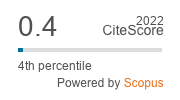Spider silk as a potential antibiotic substitute
DOI:
https://doi.org/10.33307/entomon.v47i3.775Abstract
Studies were undertaken on the antibacterial activity of spider silk against bacterial strains, using egg case silk of Parawixia dehaani (Doleschall, 1859) and web silk of Pholcus phalangioides (Fuesslin, 1775). Both silk types inhibited gram negative bacteria more than gram positive bacteria. The egg case silk of P. dehaani showed more antimicrobial activity than the web silk of P. phalangioides. The egg case silk brought about 26.05 per cent inhibition against E. coli, compared to a 22.7 per cent inhibition for B. subtilis. A linear association was found between the volume of silk extract and the percentage of inhibition.The percentage of inhibition against E. coli increased from 5.13 to 26.05 per cent as the volume rose from 20 to 100 µl. in P. dehaani.


